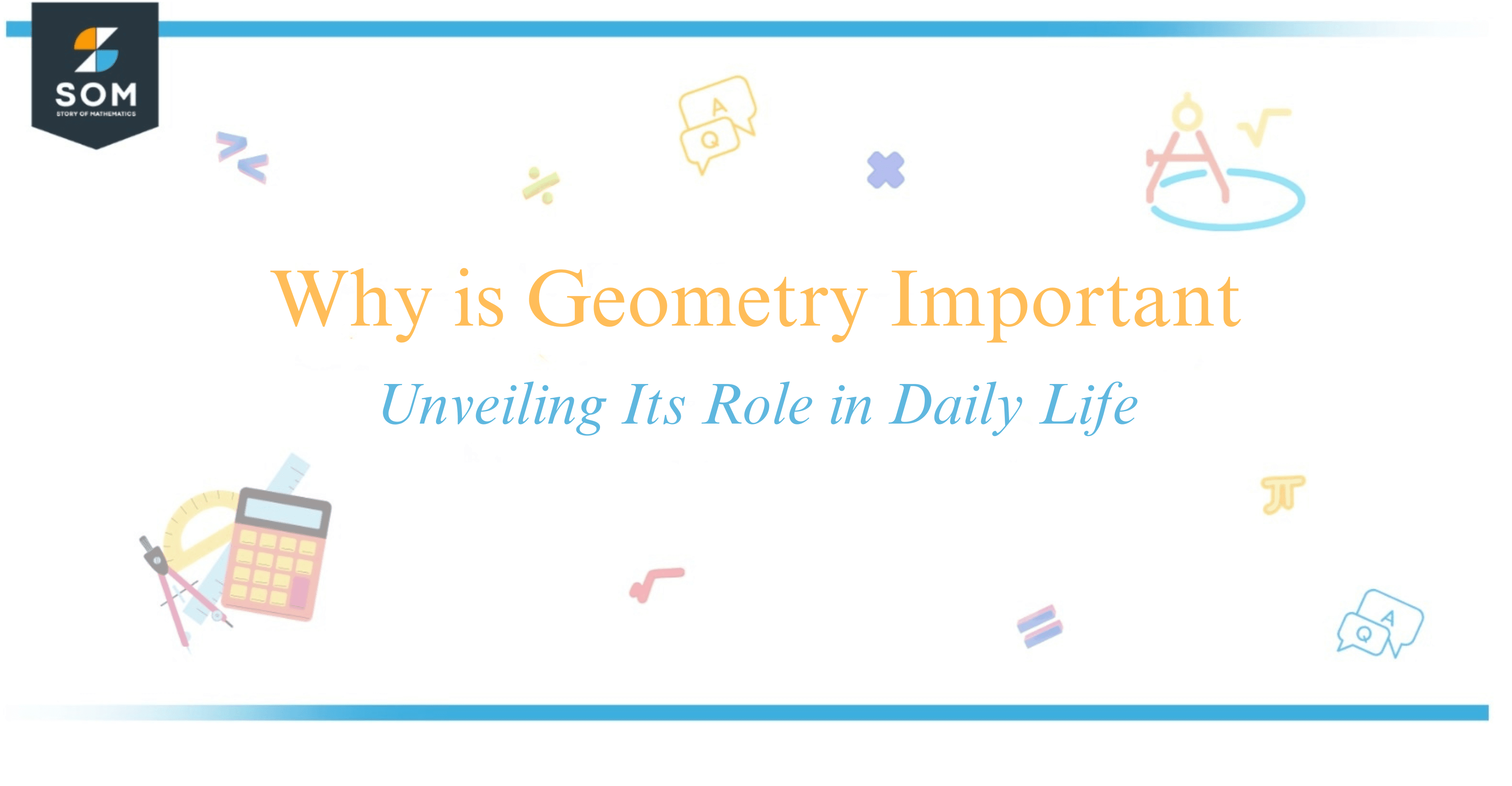
Geometry is the mathematical study that deals with the size, shape, and position of figures and the properties of space. Its significance stems from its ability to provide a framework for understanding and manipulating the physical world.
Since ancient times, geometrical principles have been fundamental in various fields such as art, architecture, and engineering.
The father of geometry, Euclid, laid down the foundational postulates and axioms that still underpin the subject today.

In daily life, geometry is everywhere—from the symmetry of a face to the patterns in a pinecone. It helps architects design buildings, graphic designers create logos, and engineers build bridges and machinery.
Geometry also plays a crucial role in the development of computer graphics, navigation systems, and even in the analysis of DNA structure.
My fascination for geometry began when I realized its omnipresence. Whether measuring a piece of furniture to ensure it fits in a room or folding a paper airplane, geometric concepts are being used.
They’re not just academic exercises; they’re tools that help solve real-world problems. And that’s the hook—how can something so theoretical be so practical?
Importance of Geometry
Geometry, as a branch of mathematics, deals heavily with questions of the shape, size, and position of figures, as well as the properties of space.

Originating from the Ancient Greeks like Euclid, geometry has been a cornerstone of mathematical thinking, progressing through Euclidean to non-Euclidean geometry.
When I study geometry, I find that it provides essential tools for understanding and manipulating the space around us.
For example, Euclidean geometry, which deals with points, lines, planes, and angles, lays the foundation for most of what we perceive as our physical world. Non-Euclidean geometry explores realms not bound by those same principles, leading to advancements in fields such as physics.
Consider the Pythagorean theorem, expressed as $a^2 + b^2 = c^2$. This formula is a fundamental principle within Euclidean geometry, underpinning many real-world applications, from architecture to navigation.
Another key element in geometry is pi ($\pi$), a constant approximately valued at 3.14159, representing the ratio of a circle‘s circumference to its diameter. This transcends mere academic knowledge; pi is crucial in various fields, including engineering, science, and technology.
Moreover, geometry is a bedrock for developing logic and reasoning skills. It involves a series of postulates, axioms, and theorems that stimulate analytical thinking.
This logical framework influences other mathematical disciplines like algebra and also areas outside of math, making it an invaluable component of education stemming from the Ancient Egyptians and Mesopotamia to modern curriculums.
| Ancient Contributor | Contribution |
|---|---|
| Pythagoras | Pythagorean theorem |
| Euclid | Elements of geometry |
| Plato | Platonic solids |
| Ancient Egyptians | Early geometrical designs |
| Mesopotamia | Early measurement systems |
In summary, the knowledge of geometry helps me to navigate and make sense of both the natural world and the constructed environments, equipping me with skills crucial for problem-solving and abstract thinking.
Applications and Impacts
My study of geometry extends far beyond textbook learning. I observe its practical significance daily, it shapes my understanding of the world.

In architecture and construction, the principles of plane geometry help in designing intricate buildings. The elegance of symmetry and patterns found in nature also manifests from geometric principles.
Considering engineering, spatial relationships and measurements are pivotal. For instance, two-dimensional and three-dimensional geometric shapes are the basis for designing components in mechanical and civil engineering.
In science, understanding the structure of molecules or the expanses of the universe relies on solid geometry.
Sports incorporate geometry too; the perfect arc of a soccer ball follows a path dictated by geometric principles. Similarly, art employs geometry to create balance and appeal through patterns and designs.
The interdisciplinary role of geometry is evident even in emerging fields like robotics and astronomy, where it supports my navigation of space and the design of autonomous robots.
My learning experience showed that geometry is fundamental to the curriculum because it enhances my problem-solving and critical-thinking abilities.
Students grasp essential life skills such as reasoning and logical thought through geometric topics. This knowledge is vital for fields ranging from surveying to art, highlighting geometry’s profound impact.
| Field | Application of Geometry |
|---|---|
| Art | Creating patterns, symmetry |
| Architecture | Designing buildings |
| Engineering | Design and analysis |
| Robotics | Spatial reasoning for movement |
| Sports | Trajectories and strategies |
| Nature | Understanding patterns, symmetry |
Conclusion
My exploration of geometry has highlighted its fundamental role in various aspects of life, from basic daily tasks to complex scientific inquiries.
The subject’s significance stems not only from practical applications but also from its contribution to enhancing critical thinking and problem-solving skills. The study of geometry is instrumental in professions such as architecture, engineering, and art, where understanding the properties of shapes and spaces is necessary.
Geometry is essential in technology development, with its principles applicable in computer graphics, simulation, and designing software that requires spatial visualization.
Geometry also supports students and professionals in developing a logical thought process by working with theorems and proofs, such as the Pythagorean theorem ($a^2 + b^2 = c^2$), which lays the foundation for these essential skills.
I appreciate the intellectual rigor geometry demands, enhancing our ability to think abstractly and reason systematically.
Recognizing its value goes beyond the academics; it’s a testament to the cohesiveness and patterns inherent in the world around us. So, as we interact with various geometric concepts, let’s remember that they’re not just figures on paper, but keys to unlocking a deeper understanding of our universe.
